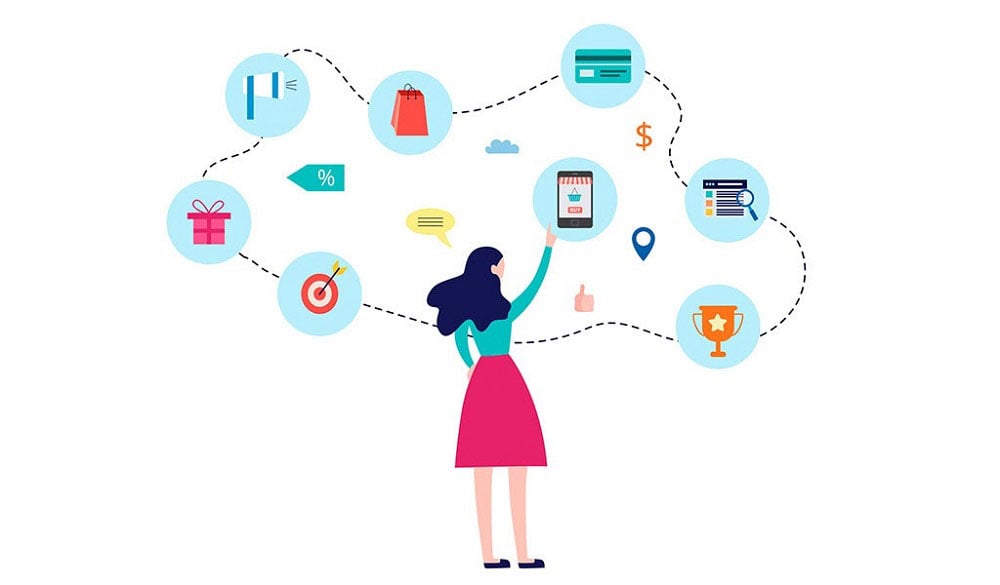It can be challenging for your business to know the perspectives of your customers. You may ask yourself why a customer spends a long time browsing your selection and adding goods to their cart and then just close the tab or why it’s taking your customers various steps to get from Point A to Point B when it should only take one. In this article, we will explain all you need to know about the customer experience journey such as what it is and how to map it.
Table of Contents
What is Customer Experience Journey?
The customer experience journey is the progression of users across touchpoints, and identifying a customer journey allows it to be analyzed to uncover critical obstacles and opportunities. This information offers a roadmap to plan for investment in your products and services in the future.
For instance, your customer journey can begin with a visit or shopping of a customer in your website, progressing to an email with a voucher for $50 off a future purchase, and following up with a phone call, and the final step is an in-person visit.
The data which is collected on the customer journey can be analyzed to provide insights into your current customers’ current opportunities, obstacles, and market segmentation.
Customer journeys enable you to make smarter decisions quickly. These are some things customer journeys can generally tell you:
- Know where customers have been, what they’re trying to achieve, and why specific issues led them down a particular channel.
- Which campaigns drive success across departments.
- The way customers use your product.
- The several attributes of your user segments.
And customer journeys can help you to answer more particular questions such as:
- Onboarding emails impact conversions in what way?
- By what way blog engagement affects free trial signups?
- What is the retention proportion of the new cohorts, and how does it compare to older ones?
- At what point in the journey is the company losing most of its users?
- How effective is our retargeting campaign?
- Live chat impacts conversions in what way?
- Which campaigns are the most efficient to acquire successful customers?
- How many consumers did you convert from AdWords?
- How do help tickets impact NPS?
- Where do we lose customers during onboarding?
- How many emails should marketing teams send to re-engage a disengaged user?
You can use customer analytics and product analytics tools to answer these kinds of questions and create a customer journey map to analyze customer journeys. By implementing appropriate customer journey analytics, you will improve brand loyalty, increase conversions, and then deliver actionable insights into the way to improve every facet of your customer experience.
Customer experience journey stages
All types of organization (B2B, B2C, Non-Profit) can be divided into four stages below:
Stage one: Awareness/Consideration
Stage Two: The Sale Process
Stage Three: The After-Sale Process
Stage Four: Retention and Referral
Based on the industry, the touchpoints will be different. However, no matter the industry, every touchpoint has the chance to be positive, neutral, or negative. The touchpoints are all moments of truth for a brand and each part of the customer journey matters. Focusing on the whole customer experience journey can renew the company with reason and give their customers a purpose to continue a relationship.
What is customer experience journey mapping?
Customer experience journey mapping, which is also called user journey mapping, is the process of building a customer journey map, a visual story of your customers’ interactions with your brand. This activity enables businesses to see their business from the customer’s perspective and step into their customer’s shoes and. It helps you to gain insights into common customer pain points and how to improve them.
First of all, all the possible customer touchpoints will be mapped out, for example, social channels, a website, interactions with marketing, and sales teams. The customer experience journey is then built across these different touchpoints for each buyer persona. For instance, a millennial buyer persona may typically become aware of a product on social, research it on the mobile version of your website, and after that, they will make a purchase on a desktop computer.
The customer experience at every touchpoint can be included in a customer journey map, which can include what action the customer requires to take and the way your brand responds.
Why is customer journey mapping important?
Customer experience journey mapping training is crucial because it is a strategic approach to improve understanding customer expectations and is important for optimizing the customer experience.
Customer journey mapping is not only crucial for small and medium-sized companies but is also necessary for larger companies. Different businesses require different customer expectations, regardless of size – customers demand an omnichannel approach to marketing, sales, and customer service.
Customer experience journey mapping software has a host of benefits, which are mentioned below:
- Benchmarking the customer experience desired by your customers against what they get.
- Enabling you to optimize the customer onboarding process.
- Creating a logical order to your buyer journey.
- Understanding the differences in various buyer personas when they move from prospect to conversion through the buying funnel.
However, the biggest advantage is simply understanding your customers more. The better you understand customer expectations, the more you can tailor the customer experience to their requirements.
Final Words
In today’s world, creating an effective customer experience journey is significantly important. There are varied steps between gaining awareness of a brand through social media and receiving a “thank you for your purchase” email after a successful transaction. You need to have good insights to build it successfully. This isn’t something you can predict or assume based only on your internal perspective. A customer experience journey is specific to the physical experiences your customers have. Therefore, the best way to understand the customer experience journey of your customers is by asking them. Especially in this world of technology, digital customer experience journey and digital customer experience journey mapping have become more and more important which helps you to save time and get the mind of your customers faster and give you diverse useful information.














